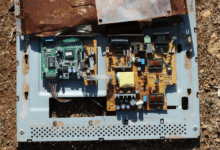
How To Avoid Overloading Your Conveyor Belt System
Conveyor belt systems are critical parts of material handling equipment in various industries. They are beneficial for moving heavy loads and bulk materials over long distances or through challenging terrains.
However, conveyor belts can face various issues, including overloading, which can lead to downtime, damaged equipment, and even injuries. Look at some tips to avoid overloading your conveyor belt system.
Understand the Conveyor Belt Capacity
Every conveyor has a specific capacity for how much material it can handle safely within a given period. Overloading the belt can harm its parts, lead to system breakdown, or cause accidents. You can find your conveyor belt’s capacity in its specification documents or by consulting the manufacturer.
Optimize Load Distribution
Overloading your conveyor belt system can occur if the weight distribution of the material you are moving is not well balanced. Ensure that the load is distributed evenly across the conveyor belt. You can achieve this by setting up a chute or hopper design that accommodates the material’s characteristics. Moreover, you can adjust the trough angles, height, and positioning to distribute the weight of the conveyed materials. Unbalanced loading can cause excessive wear and tear on the system, leading to unexpected breakdowns.
Regular Inspection and Maintenance
Routine inspection and maintenance of your system can help you prevent overloading. Regular check-ups will help you know what normal operations look like. Then, you can detect problems before they escalate. Conveyor belts are often exposed to harsh environments and require daily lubrication, tracking adjustments, and wear and tear monitoring. A well-maintained conveyor system performs efficiently and has a long lifespan.
Train Your Employees
Training your employees and running regular safety drills can prevent conveyor overload. Your team should be knowledgeable about the conveyor’s capacity, know how to operate it safely, and be capable of identifying potential overload conditions. Train them on best loading practices, the right use of equipment, and how to inspect for signs of overloading.
Install an Overload Protection System
Investing in an overload protection system (OPS) can help you avoid conveyor overload. An OPS can automatically detect when the conveyor system is at risk of overload and shut it down safely before it escalates into a dangerous situation. This system can help you avoid unexpected breakdowns, reduce the risk of injuring employees, and minimize repair costs.
Avoiding conveyor overloading in your material handling system is crucial for ensuring operational efficiency and safety while reducing repair costs. Knowing how to get the most out of your conveyor system and prevent overloading will save you time, money, and headaches in the long run.






